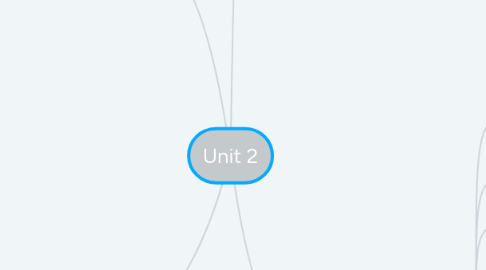Unit 2
by Lindsey House


1. Copyright: the legal right that is given to the owner of their work which allows the owner to decide who is able to use and distribute their work
1.1. Copyright Infringement: when work that has been copyrighted is distributed or used publicly by somebody who is not the owner without first getting permission from the copyright owner themselves
1.2. If you are caught unlawfully using and distributing copyrighted work, you could be subject to paying the owner for any damages done
2. Universal Design
2.1. Accessibility: In order for UDL to occur, educators need to ensure all students are able to access the information. It is important for educators to think about all of the different learning needs of their students.
2.2. Apply Knowledge: Students will always want to know how the information they are learning will ever be used in real life. Making sure to relate information to real life helps students better understand why they are learning the information and how it will help them in the future.
2.3. Expression and Communication: Educators should allow students to express what they have learned in a variety of ways. If you only give students one option to demonstrate their knowledge, then they are only being tested on that single media.
2.4. Self-Reflection: Educators need to refelect on their own teaching practices to see what resonates with their students and what doesn't.
2.5. SMART Goals: Students should have SMART goals, which stands for: Specific, Measurable, Attainable, Relevant, Time-based. When goals meet this criteria, students get a better sense of direction and are able to achieve their goal(s).
3. Constructivist Models of Learning
3.1. Discovery Based learning is a method of Inquiry-Based Instruction that encourages learners to build on past experiences and search for new information to discover facts.
3.2. Engaged learning is the process in which students are active participants in their own learning. Students complete research, discuss with peers, and create projects with different media. The educators role is a coach who guides students to complete their goals.
3.3. The three foundations are: behaviorism, cognitivism, and constructivism
3.3.1. Behaviorism is learning based on the idea that all of our behaviors are acquired through conditioning. Conditioning occurs when we interact with our environment; how we respond to different stimuli found in our environment shapes our behavior.
3.3.2. Cognitivism focuses on trying to understand and explain the hidden processes that occur in a student's brain when they are learning. Students are actively processing information
3.3.3. Constructivism is based on the belief that by reflecting on our own past experiences, we are able to get a greater understanding for the world we live in as a whole. Interact hands on with different materials and having conversions and discussions with peers. Exploration is key to learning.
